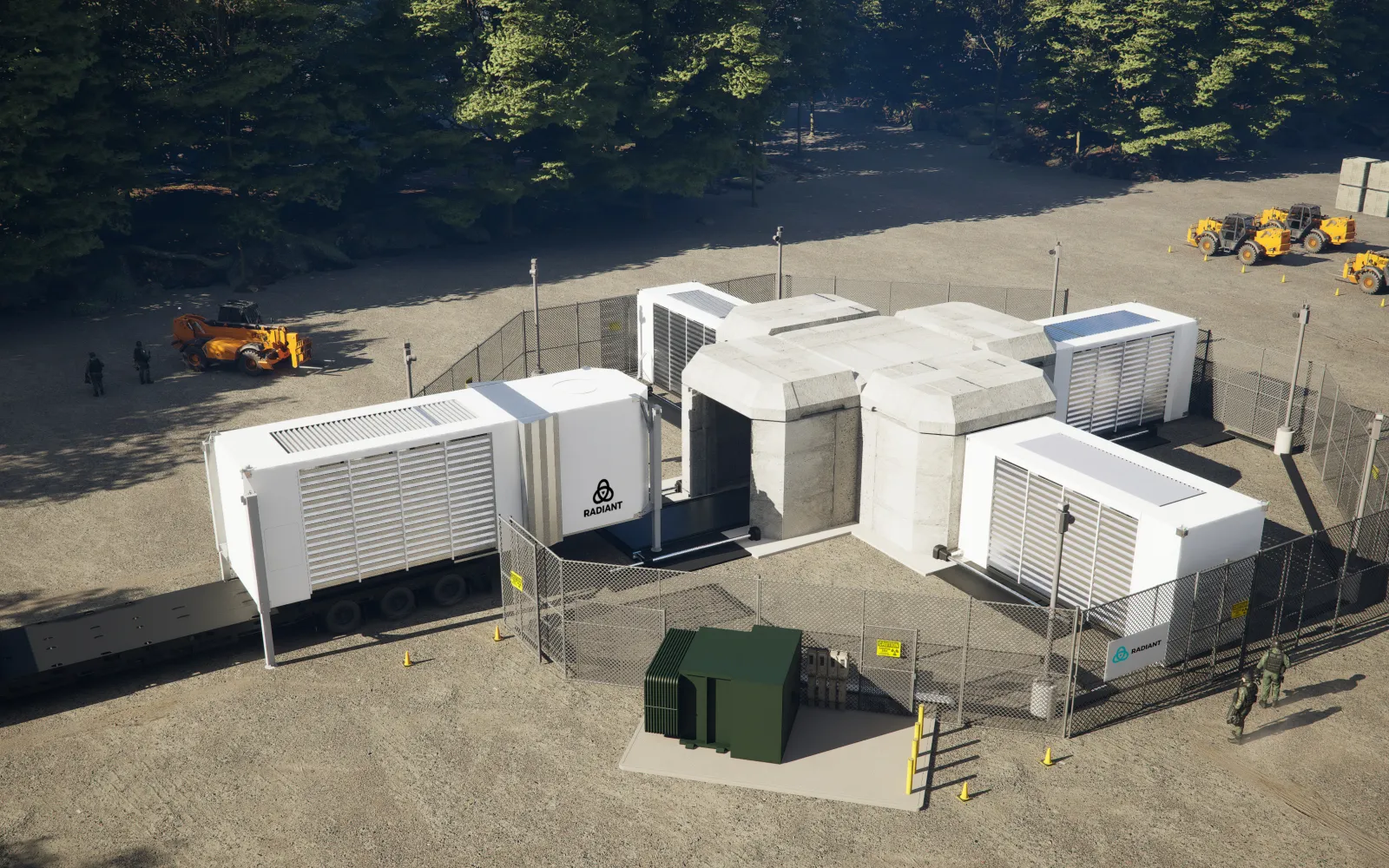

Radiant
Building a portable nuclear microreactor to replace diesel generators
Generating more electricity through nuclear fission is a reliable and carbon-free way to produce the energy we’ll need to power the burgeoning AI innovation wave and data-center industry, and to eventually electrify everything for a cleaner, more resilient, more prosperous American economy. It’s terrible, then, that U.S.-based utilities essentially stopped building new nuclear plants in the 1980s, bringing innovation in the field to a halt and allowing a highly trained workforce of nuclear engineers and nuclear-plant construction workers to die out. For decades, the nation’s muscles for translating novel nuclear ideas into reality were allowed to atrophy.
But in the last few years, a handful of nuclear startups have begun to rebuild those muscles. Radiant Industries, creator of the world’s first factory-constructed microreactors, is in the vanguard of that movement, and I’m thrilled to share the news that DCVC Climate has led a $100 million Series C funding round for the company. With the new funding, Radiant will complete its Kaleidos Development Unit reactor and will conduct fueled demonstration tests in 2026.
I’ve known the leaders at Radiant since my time as the program director in charge of nuclear fission programs at the Department of Energy’s ARPA‑E. Part of my work there was to educate the nuclear industry about digital twins: faithful computer models of real-world hardware that can help accelerate design, operations, and troubleshooting. What caught my attention about the Radiant team is that they were already doing everything I wanted everyone else to do. They had designed and built real things, notably SpaceX’s self-landing Grasshopper rocket. They already understood digital twinning and the other tools and practices that go into modern prototyping and manufacturing.
These ideas aren’t new, but Radiant cofounder and CEO Doug Bernauer and his team have been using them to bring long-overdue innovations to nuclear technology. For one thing, they’ve figured out how to cram an entire reactor, including its power conversion system, into a box the size of a cargo container. With this portable, 1‑MWe microreactor, there will be no assembly on-site: Radiant will simply deliver it via plane or truck and plug it into the local grid, which is often an isolated microgrid. It’s a perfect power solution for Arctic communities that only have microgrids, and for remote military posts, mining and construction sites, and data centers — places that often depend on loud, smelly diesel generators that gulp large amounts of expensive fuel and emit huge amounts of CO₂ and other air pollutants.
To make Kaleidos small, safe, flexible, and efficient, Radiant has made a string of smart design decisions. The reactor is fueled by TRISO particles (tristructural-isotropic), made of uranium kernels encased in layers of carbon and ceramics; these particles can’t crack open even in a loss-of-coolant accident, making the reactor meltdown-proof. Second, Kaleidos uses supercritical CO₂ to move heat from the reactor to the gas turbines that generate electricity. That’s more efficient than the steam cycle used in conventional fission reactors, which means, in turn, that the entire system can be air-cooled rather than water-cooled. Since a Kaleidos unit doesn’t need a water source, it can be sited almost anywhere.
It all represents a huge break with conventional wisdom in the nuclear industry, which was fixated for decades on achieving economy of scale. Reactors got bigger and bigger so that the required capital investments could be spread over more megawatts of generating capacity and more customers. But as I mentioned earlier, the U.S. and Western European nations have largely lost the ability to build large facilities quickly or cheaply. (America’s newest reactor, Unit 3 at Georgia’s Vogtle Electric Generating Plant in Georgia, took 10 years and $34 billion to build.) Radiant focuses on manufacturability rather than economy of scale, choosing a design that’s modular, repeatable, and easy to assemble. That’s what will make Kaleidos reactors cost-competitive with the polluting diesel generators they’re meant to replace.
In September, Radiant successfully completed a passive cooldown test, using electric heaters (in place of uranium fuel) to raise the reactor core to operating temperatures and then cutting off cooling. The test validated Radiant’s computer models and proved that the reactor can cool itself in an accident just using outside air. In 2026, the company will transport a Kaleidos reactor to the DOME facility (Demonstration of Microreactor Experiments) at Idaho National Laboratory and conduct a similar test with real TRISO fuel inserted. We expect Radiant will be one of the very first nuclear startups to complete such a fueled cooldown test — a key step in winning an operating license from the Nuclear Regulatory Commission.
I’ve never met a team more committed to delivering on schedule and on budget, which means they’ll be able to bring reliable, clean, affordable energy to remote communities and critical infrastructure facilities all the sooner. I couldn’t be more encouraged about their progress, and we’re proud to put DCVC’s capital to work to fuel it — and America’s energy renaissance.




